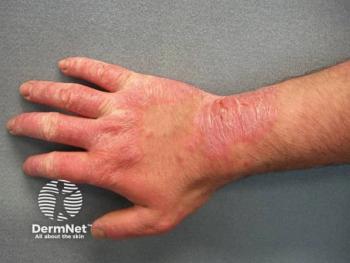
LEVEL UP Trial Sets New Benchmark for Atopic Dermatitis Treatment

Christopher Bunick, MD, PhD, explains why composite endpoints are now critical for evaluating patient outcomes in AD therapy.
In a recent interview with Dermatology Times, Christopher Bunick, MD, PhD, associate professor of dermatology and translational biomedicine at Yale University School of Medicine, broke down the implications of the pivotal LEVEL UP trial for patients with atopic dermatitis (AD).
According to Bunick, the study not only reinforced the value of measuring multiple treatment outcomes simultaneously but also introduced a new bar for success that all future therapies should aim to meet.
"It's very clear from the LEVEL UP trial that hitting a composite endpoint of EASI 90 or IGA 0/1 plus itch 0/1 on that 0 to 10 scale, the HNRS scale, that composite endpoint of skin clearance and itch relief is essential to achieving optimal care for the patient, or what we call minimal disease activity," Bunick said.
Why Composite Endpoints Matter
While traditional AD trials have often focused on clinician-reported outcomes like EASI (Eczema Area and Severity Index) or IGA (Investigator Global Assessment), Bunick emphasized that these markers alone may not reflect the full scope of patient experience.
The LEVEL UP trial was the first to use this composite endpoint—EASI 90 or IGA 0/1 plus itch score 0/1—as its primary endpoint. The results were telling: oral upadacitinib showed superiority over dupilumab at 16 weeks by approximately 2-fold in terms of reaching this benchmark.
Elevating the Standard of Care
These findings have important implications not just for clinical research but for routine care delivery, according to Bunick.
Bunick pointed out that patients who reach this benchmark show clear improvements in quality of life, reaffirming the clinical relevance of this multidimensional assessment.
Shifting Paradigms in AD Management
Over the past 1 to 2 years, the concept of minimal disease activity has gained significant traction in dermatology, Bunick said.
The shift is also influencing how future therapies will be evaluated in clinical trials.
Beyond its research significance, the LEVEL UP trial highlights a larger trend toward integrating patient perspectives into clinical endpoints.
To hear more about OX40 inhibition from Bunick,
Newsletter
Like what you’re reading? Subscribe to Dermatology Times for weekly updates on therapies, innovations, and real-world practice tips.



















